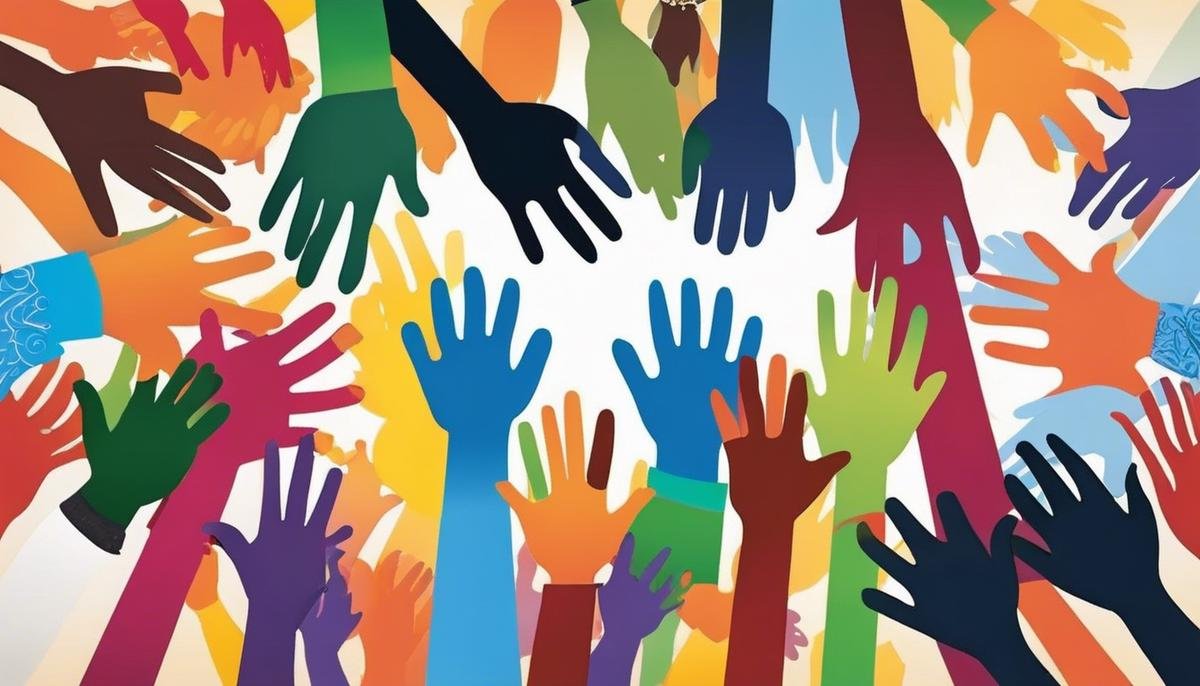
In the multifaceted spheres of healthcare and societal perception, there exists a profound interplay between autism and race. This duality poses a significant influence on factors including the prevalence, diagnosis, and treatment of autism, visible most notably across a multitude of racial communities. The differential rates of autism diagnosis in Caucasian, African-American, Latino, and Asian groups underscore the urgent need to scrutinize the underlying reasons behind these disparities. Delving further, it becomes clear that cultural perspectives and systemic disparities in accessing autism services among various racial groups play a considerable role in crafting these narratives. By comprehending and addressing these factors, there lies the potential to promote equity in autism care, a monumental step towards creating an inclusive, supportive environment for every individual touched by autism.
Autism Diagnosis and Racial Differences
Understanding the Racial Disparities in Autism Diagnosis
Every family takes immense pride in the unique characteristics woven into its fabric. Each member carries qualities that bloom to create the signature warmth that transforms a house into a home.
We understand, as parents, how crucial it is to uncover the distinctive potential our children carry within them. Sometimes, tapping into this potential can be a mystery, particularly when they are neurodiverse, such as kids with autism. Noticing these little nuances requires parents to be observant, but sometimes societal and racial disparities can create stumbling blocks.
One such disparity seen significantly is the differing rates of autism diagnosis across various races.
Autism Spectrum Disorder, or ASD, is a developmental disorder that can lead to significant behavioral, social, and in some cases, cognitive impairments. Despite the fact it doesn’t discriminate based on race or ethnicity, research indicates a considerable difference in the rates of its diagnosis among various racial and ethnic groups, notably in America.
The Centers for Disease Control and Prevention (CDC) has reported that, for many years, white children have been diagnosed with autism at higher rates compared to their Black and Hispanic counterparts. This isn’t because autism is more prevalent in white children; rather, it points to underlying inequalities in healthcare access, awareness, and socioeconomic factors.
African American and Hispanic children tend to be diagnosed with autism later than white children, oftentimes leading to delayed intervention. Early intervention can significantly improve the quality of life for kids with autism, reinforcing how vital timely diagnosis is. Many factors contribute to this delay, such as cultural differences in understanding developmental disorders, financial constraints, and lack of equally distributed health resources.
However, the silver lining here is that the gap has been narrowing over recent years. The CDC reports that, as of 2020, autism diagnoses in Black and Hispanic children have risen, bringing them closer to par with their white peers. This progress is attributed to increased awareness and efforts to make autism screening more accessible to all children, regardless of race.
While we’ve taken steps forward, it’s essential to not overlook the continuous challenges presented by these disparities. Our mission as a collective parenting community should be championing equal access to diagnosis, treatment, and services for children of all races and ethnicities. Let’s empower our children by fostering an environment that promotes early autism detection and intervention without societal or racial disparity.
Remember, every child is unique, and their neurodiversity is something to be embraced, not feared. Equipped with understanding and the right tools, every child, regardless of their race or background, can achieve extraordinary things!

Cultural Perceptions and Autism
Unraveling Cultural Fabric: Understanding Autism Perception
Let’s take a moment to explore how cultural backgrounds impact the perception and understanding of autism. Culture plays a pivotal role in shaping how we view the world, including medical conditions like Autism Spectrum Disorder. As we sink deeper into this topic, let’s think about the power of empathy and understanding, that we as a parenting community possess, in addressing the different cultural stigmas and myths associated with autism.
One cannot overlook the influence of culture on shaping perceptions about autism. In many cultures, autism and other neurological disorders are cloaked in mystery, rarely discussed, and often misunderstood. This lack of knowledge and understanding can instigate fear, stigma, and unfortunately, discrimination against those affected. Families are sometimes in denial about their child’s unique abilities, which can eventually lead to delayed diagnosis and intervention.
Now, think about a culturally diverse classroom settings where the teacher doesn’t fully grasp the signs of autism due to varying cultural norms in behavior. Such an environment makes it difficult to effectively recognize and address the needs of children on the spectrum.
Cultural competence within healthcare fields serves a paramount role. Autism is not limited to a particular geographical location or race. Therefore, it becomes crucial for healthcare professionals to be culturally sensitive in identifying and treating autism. Cultural awareness training can help professionals to better understand the varied manifestations of autism across different ethnic groups.
Let us delve into the realm of language, too. We often forget the critical factor it plays in children’s ability to communicate and express their emotions. A linguistic gap can hamper the autism diagnosis in children from non-English speaking families, leading to a delayed onset of the necessary intervention.
Empowering parents is another piece to this puzzle. Parents advocating for their child’s needs can and should have a profound influence on how autism is perceived and treated within their cultural community. Through open dialogues and honest discussions, parents can help debunk myths, promote understanding, and build acceptance.
Speaking about myths, stereotypes about autism, fed by misinformation and misunderstanding, are more prominent in certain cultures. Disseminating accurate knowledge about autism within these communities becomes a vital step towards fostering acceptance and understanding. By challenging these stereotypes, we can help create a society where children with autism are celebrated for their unique abilities, and not hampered by baseless stigmas.
Moreover, community engagement plays a significant role here. Community-based initiatives like awareness campaigns, screenings, and workshops can foster a better understanding of autism among different ethnic communities. Such initiatives often bear fruit by bridging cultural gaps and establishing support systems for families dealing with autism.
In conclusion, cultural influences play a critical role in shaping the perception and understanding of autism. However, by harnessing the power of inclusivity and awareness, every individual can play their part in overcoming cultural barriers, challenging stigmas, and nurturing acceptance and understanding for autism. Remember, every child, regardless of their unique abilities, holds the power to enrich the world in their unique way. Let’s give them the environment they need to blossom.

Racial Disparities in Access to Autism Services
Different cultural backgrounds may indeed hold distinct perceptions of autism, with families interpreting their children’s behaviors and experiences in ways that significantly differ across cultures. These nuances often extend beyond the clinical perception of Autism Spectrum Disorder (ASD), touching on spiritual, familial, communal, and societal aspects.
Cultural perspectives can be influenced and shaped by lingering myths, superstitions, or outmoded beliefs that harbor ignorance and misconceptions about autism. These misguided notions breed fear, stigma, and, worst of all, discrimination against children with autism. In many communities, the cultural perspective towards autism might even delay the parental acceptance of the condition, delay seeking intervention, or inadvertently promote social exclusion. It crucial to empower families to challenge these harmful stereotypes and stand against biased cultural norms.
School environments offer a critical venue to challenge these cultural disparities. A culturally diverse classroom that caters to children across the spectrum can face challenges if educators are not fully equipped to understand and address the unique needs of each child. Providing teachers with specialized training to recognize and accommodate the diverse range of abilities, behaviors, and cultural factors associated with autism can foster inclusive and accommodating learning environments.
Cultural competence stands as a cornerstone in advancing equality in accessing autism-related services. Healthcare professionals should be adequately equipped to recognize, diagnose, and treat autism within the context of each child’s cultural background. Language barriers can play a significant role in this discrepancy, hindering effective diagnosis, treatment, and support. It’s imperative to provide multilingual resources and training to break down these language barriers and ensure equitable care for all families.
Parents also emerge as strong advocates in the fight against disparities in accessing autism-related services. When empowered with accurate knowledge and understanding, parents can challenge the cultural roadblocks hindering their child’s proper care. They should be encouraged and supported to stand as vocal advocates for the needs and rights of their children, promoting acceptance within their communities.
Dispelling myths and stereotypes about autism remains a vital task. Engaging in culturally sensitive dialogue about autism can promote greater understanding and acceptance, thereby, encouraging early intervention, timely diagnosis, proper treatment, and the much-needed support for families dealing with autism.
By driving community engagement and initiatives targeted at bridging cultural gaps, we can strengthen a society-wide response to this disparity. It takes not just the parents or caregivers, but the collective efforts of communities to educate, support, and empower each other, fostering an inclusive society that nurtures respect and understanding for those living with autism.
Inclusion and awareness are our tools for change. It is through nurturing acceptance that disparities can be lessened and more equitable conditions can be provided for every child, regardless of their race or ethnicity. This vision of an inclusive, accepting, and understanding society not only ensures equitable access to autism-related services, it also empowers all individuals with autism to achieve their potential.

Promoting Equity in Autism Care
Equipping Parents and Communities for Advocacy
Empowerment starts at home, and in this case, it’s about parents standing tall as advocates for their children with autism. There are roadblocks, misunderstandings, and stigmas to overcome, but the power parents wield when it comes to their children’s well-being is tremendous.
Parents can start by investing their time and enthusiasm into understanding autism better. Such grounding can help them discern accurate information from the myths and form a strong basis for advocating for their children. Parents can not only educate themselves but can also work to share this knowledge within their social circles and community, dispelling stereotypes and fostering a broader understanding of autism.
Moreover, parents can collaborate with educators to ensure that their child’s unique needs are met in the classroom. Teaming up with teachers and school administration can not only lead to a more inclusive and supportive learning environment but also can provide other parents with a blueprint to follow. Encourage schools to provide specialized training for teachers to better understand and support students with autism.
Healthcare Provider Training
The need for cultural competence in healthcare cannot be overemphasized. Healthcare providers play a significant role in diagnosing and treating autism, and a lack of understanding around cultural nuances can contribute to the disproportionate rates of diagnosis.
Medical schools, hospitals, and clinics should encourage and provide training to promote a better understanding of how autism might present itself across different racial and cultural backgrounds. This can help ensure that all children, regardless of their race or ethnicity, have access to timely and accurate diagnosis and treatment.
Overcoming Language Barriers
Language should never be a barrier to receiving a diagnosis or necessary support services. Healthcare institutions and community organizations should prioritize offering multilingual resources for diagnosing autism and providing the necessary follow-up services.
Parents who do not speak English as their first language may miss out on essential information about autism or struggle to communicate their child’s needs. Offering translators or providing information in other languages can bridge this gap, ensuring everyone has access to the support they need.
Driving Community Initiatives
Community leaders and members can work together towards initiatives designed to bridge cultural gaps that contribute to disparities in autism care. These initiatives could include workshops and seminars, inclusive community events, and programs for parents and families of children with autism from diverse cultural backgrounds.
Recognize Inclusion and Awareness as Tools for Change
It’s a collective responsibility to cultivate an inclusive and accepting community for individuals with autism, irrespective of their racial or ethnic backgrounds.
Let’s invest in driving awareness about autism, focusing on celebrating neurodiversity as a part of the wonderful human spectrum that it is. Every public discourse, awareness campaign, and school program counts towards turning the tide, helping ensure children with autism are recognized, supported, and upheld in every way possible.
This journey towards promoting racial equity in autism care takes patience, understanding, and shared responsibility. As parents, educators, healthcare providers, and community members, there’s an exciting opportunity to chip away at the disparities and create a society that champions inclusivity at each step, a society where each child’s uniqueness makes us richer, more diverse, and infinitely more beautiful!

The challenge in fostering an equitable landscape for autism care hinges on a comprehensive understanding of cultural, societal, and systemic factors affecting diverse racial groups. This calls for dispelling myths about autism that exist within different societies, addressing racial disparities in access to services, and advocating for effective policy change. Yet, it is essential to remember that individuals themselves can be agents of change. Parents, educators, and stakeholders can actively participate in creating environments that facilitate equal access to the much-needed resources for children diagnosed with autism, irrespective of their racial backgrounds. By collectively striving to dismantle disparities, we can foster a more inclusive world that amplifies understanding, acceptance, and holistic care for all those living with autism.




